The Society for Advancement of Management (SAM) is the oldest among professional management societies. On November 11, 1910, colleagues of Frederick W. Taylor met at the New York Athletic Club. They were: Frank B. Gilbreth, Morris L. Cooke, Robert Kent, Conrad Lauer (for Charles Day) and Wilfred Lewis.
These executive pioneers decided to form a society to discuss and promote principles of “scientific management,” introduced in the late 19th century by Taylor, a brilliant steel engineer. During 1911-12 about thirty people met regularly at Keene’s Chop House to talk about managerial subjects.
Taylor, Gilbreth, and Cooke participated actively in the First Conference on Scientific Management, along with Henry K. Hathaway, James M. Dodge, Sanford E. Thompson, Carl Barth, and Mrs. Frank B. (Lillian) Gilbreth. It was held October 12-14, 1911 at Amos Tuck School, Dartmouth College.
Public interest in scientific management grew when Interstate Commerce Commission hearings in 1911-12 revealed statistical arguments by Eastern railroad managers in support of the desired rate increase. The ICC denied their request, although a Minnesota Federal judge upheld it unchallenged. Also, the Supreme Court validated certain cost charges claimed by the railroads.
On November 7, 1912, at the Hotel Astor, the pioneers formed the Society to Promote the Science of Management. Dodge was elected president and Kent secretary. In December 1914 a small Bulletin for members began to be published.
At the December 1915 meeting, Frederick Taylor, who had just died, was named “honorary member in perpetuity” of the Taylor Society – renamed in his memory. Immediately afterward, this membership class was abolished so that no one else could ever receive the honor.
The Taylor Society expanded to over 100 members by World War I when it temporarily suspended activities for the War effort. After the war, the Society resumed serious efforts to promote the science of management. The constitutional goals of the Taylor Society were, through research, discussion, publication and other appropriate means:
To secure enlightened application of the principles of organized effort to benefit industry and society generally – labor, employer-managers and consumers, specifically.
To bring about elimination of un necessary effort and backbreaking toil in performance of the world’s work.
To promote scientific study and teaching of principles of organized effort and their adjustment to changing conditions.
To encourage wider recognition of the value to all members of the society of applying these principles.
To inspire laborers and employer managers, to adhere steadily to the highest ethical standards in a full social context.
In I917 another group that would share in the emergence of SAM was organized in Chicago: the Society of Industrial Engineers. The National Defense Council allegedly encouraged its formation to assist the Government during war time. The Society worked directly with the Aircraft Board and Ordnance Bureau of the Army. SIE thus fulfilled its founding purpose to furnish a vehicle for bringing together in closer relationship persons who are actively engaged in promoting efficiency in business and for making the training and ability of such persons available in the emergency arising out of the present war.
After World War I SIB’s policies were:
1. To furnish a medium for bringing out original contributions to the science of management.
2. To provide an organization through
which persons who are applying scientific methods to the solution of the problems of production and distribution may ex change views and coordinate their efforts.
3. To cooperate with other societies.
4. To codify and standardize the professional standards of the industrial engineer.
5. To promote efficient, energy-conserving management.
6. To enhance the efficiency and prosperity of American industry.
In 1921 Herbert Hoover was made the first patron member of SIB. The first student chapter was formed that year at Pennsylvania State University. Others followed at Massachusetts Institute of Technology, New York University, and Ohio State University.
In I936 the Taylor Society and the Society of Industrial Engineers united to produce the Society for Advancement of Management.
Shortly thereafter, a group called the Industrial Methods Society joined SAM. The purpose of these mergers was to achieve more efficient operations of broader scope by combining memberships and financial resources to advance the profession of management.
Objectives and activities of the Taylor Society and SIB integrated with this union. SIB had presented the first Emerson Trophy in 1930 and the first Gilbreth Medal in 1931.
Over the years, SAM developed annual national conferences and panels, teaching pro grams, job counseling for war veterans, chapter contests for achievement awards, booklets and films for sale or rent to meet the increased needs of its growing membership. The scientific explosion begun by World War II helped expand SAM’s operations.
More History Coming Soon!
Check back frequently for more information on our SAM History including our Past-Presidents, Collegiate Case Competition Winners, International Society Award Winners & More!

